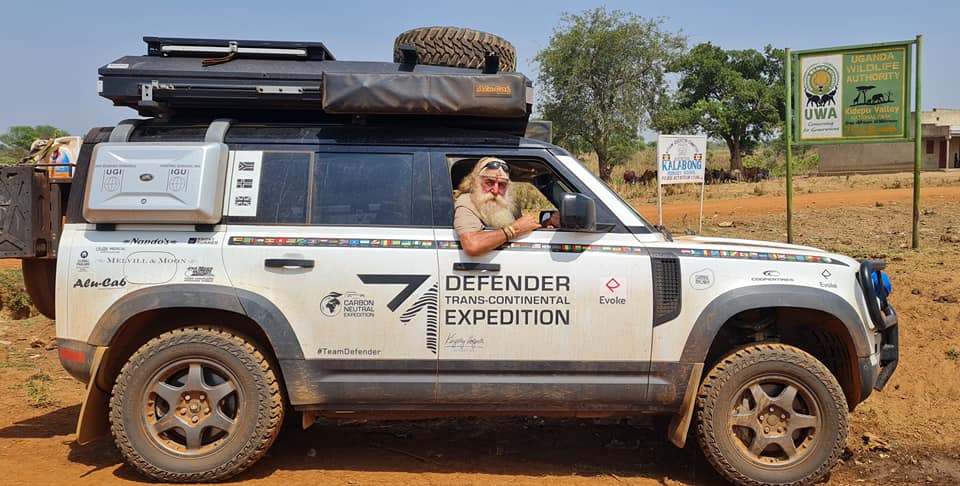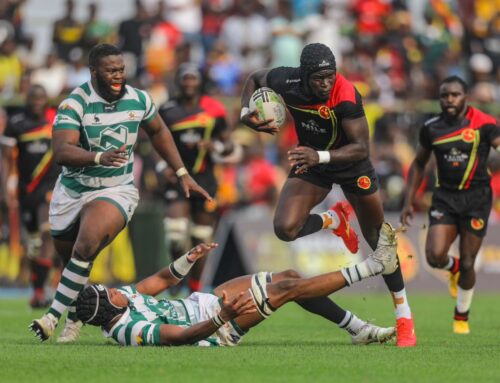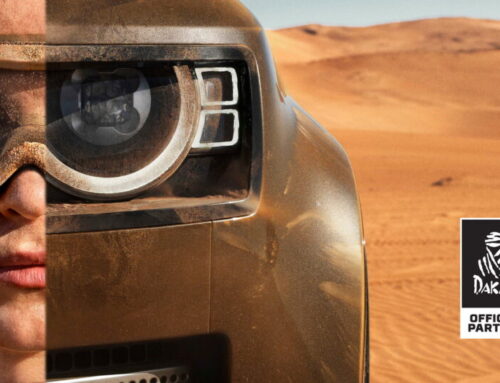‘Did you hear the leopard in camp?’ asks experienced ranger 38-year-old Simon Ochieng, a Lua from Tororo near Lake Victoria, at our wild camp on a hilltop overlooking one of the most beautiful stretches of rugged, isolated wilderness we’ve ever seen in Africa. We’ve dreamt about reaching Uganda’s remote Kidepo National Park on the border with South Sudan for years and looking over its savannah landscape with thousands of sausage trees and buffalo herds stretching as far as the horizon, the whole surrounded by jagged mountain peaks, is a moment we’ll remember forever. You can’t get here in the wet and John Dahl from Nile River Explorers had urged us ‘Go now!’ whilst there’s a dry spell.
We rumble-strip and speed-hump all the way north from Jinja, then take a 180Km winding dirt road from Kitgum, where we fuel up and Shova Mike finds a small roadside dispensary with a cure for hookworm infection, which is fast becoming an ugly, festering sore on his foot. Not ideal as he’s at his peak training for his 18th attempt at the Cape Epic. He’s one of the ‘Last Lions’ – one of only 4 people in the world to have completed every race – and we won’t allow him to miss this one.
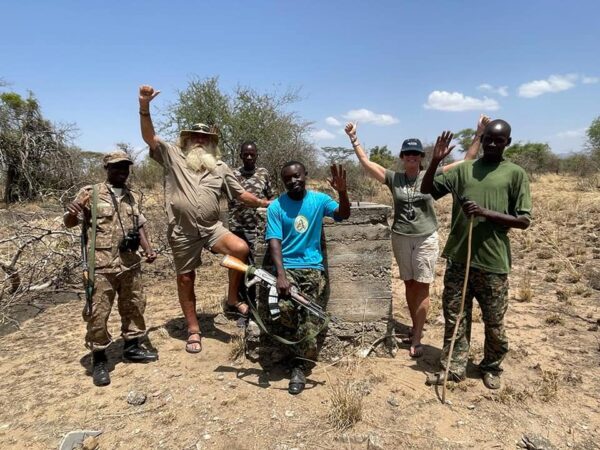
But that’s not all that’s wrong with Shova Mike; he’s also got a headache and fever. Ross tests him for malaria – negative – but Mike gets worse. Soon after entering Kidepo, he starts a course of Coartem (malaria treatment), which we all carry close at hand.
With Simon as guide and Shova Mike now suffering the malaria chills, we head to the far north of the Park in +40’C heat, swatting tsetse flies as we go. At this time of year, most of the game is around the Narous River that still has water lying in murky pools, attracting hippos, elephants, zebra, Rothschild’s giraffe, Jackson’s hartebeest, hundreds of oribi and dik-dik, Defassa waterbuck, eland, huge warthogs, vultures and vast herds of buffalo. What we most like about Kidepo is the privacy – it’s not built for mass tourism. But a glaring reminder of Uganda’s bloody past is the massive, brooding, bunker-like structure built into a hillside that was once Idi Amin’s personal hunting lodge in this 1,442 km² national park, established in 1958.
We cross the ‘courtship river’ and then the dry, sandy bed of the Kidepo River, the picturesque track winding through hundreds of Borassus palms (‘Kidepo’ means to collect the big orange-coloured fruit). In the distance looms a high, dome-shaped mountain that Simon tells us is in South Sudan. We stop at some hot springs called Kanangorok; Ross climbs out of his Defender pouring with sweat and looking shocking. “Need to rest – malaria – felt it coming on as we crossed the Kidepo River,” he mumbles then starts vomiting. He immediately takes Coartem plus anti-nausea and fever meds.
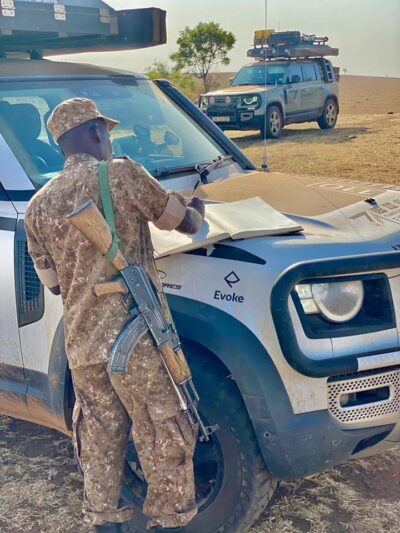
Now two of the team are down. We swap drivers, add loads of Rehydrate to the water bottles and press on to reach a small military encampment of ragged, thatched huts in the north of the Park. Leaving Mike and Ross in the shade looking miserable, a small group of friendly, armed soldiers take the rest of us on foot down a narrow dirt foot path to a square, concrete beacon that they say was erected during the Idi Amin era to mark the border between Uganda and South Sudan. Nearby, there’s just a piece of string across a narrow dirt track that climbs into South Sudan. “People cross here just with their Sudanese ID documents and travel to Gulu and even Kampala to do shopping,” Simon tells us. “But for you foreigners, it’s impossible. You have to go to a proper border post.”
Around the campfire that night, it’s only Kingsley, Shee, Fiona and Simon – Ross and Shova Mike are sweating and puking in their roof tents. A mishmash of leftover chicken stew, elephants trumpeting on the riverbank below, lions in the distance and later, the leopard in camp. Simon the ranger is a wealth of knowledge. “The President visited here and told us that if we found poachers with weapons in the Park, we should shoot,” he tells us. “We need to protect Kidepo. Unlike South Africa where there are fences, here the natural corridors for the game are all open and when the Kidepo River is running, all the wildlife migrate. We have one old buffalo bull that often spends 6 months in Kenya and our buffalo herds are some of the biggest in Africa – one herd is more than 3,000 strong.”
“What about the last remaining Ik hunter-gathers who inhabit the Morungole mountain range?” I ask. “They’re no problem,” says Simon. “They don’t own livestock so are not the enemy. Their biggest prize is honey. They harvest it sustainably, never rob the entire hive and don’t even use fire to smoke out the bees. They are allowed in Kidepo as they also act as our eyes and ears.”
I ask Simon if, once Shova Mike and Ross are over their malaria, we can also explore to the east and get into Kenya. “Not possible at the moment,” he replies. “The army are trying to disarm the Karamojong tribe – there are cattle rustling problems between them and the Turkana of northern Kenya.”
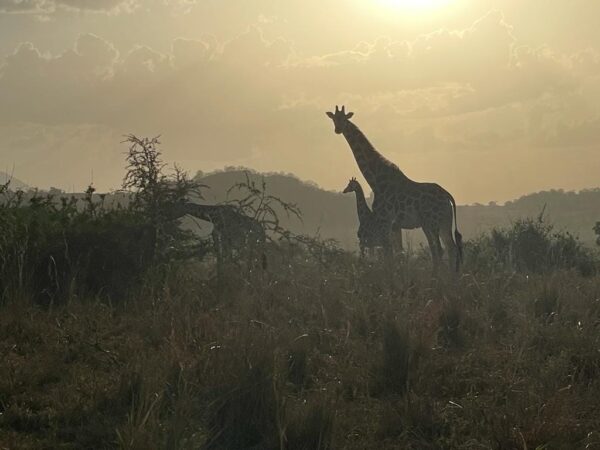
And so, we turn south through the vast game-filled plains of Kidepo to return to the Nile. Shova Mike is recovering but Ross is still man-down – then Fiona starts feeling ill on the road to Murchison Falls. Bloody Anopheles mosquitoes have got her too, despite all her precautions.
3 out of 5 expedition members down with malaria in 4 days. We count back: infection probably happened as we crossed the border from Malawi into southern Tanzania. It’s a personal reminder of why malaria prevention is one of this Defender Transcontinental Expedition’s biggest humanitarian efforts and how very lucky we are to have the right medication close at hand in our first-aid kit. Will keep you posted. Sorry for lack of pics – malaria.
Adapted from the Kingsley Holgate Foundation Defender Transcontinental page here: https://kingsleyholgate.com/articles/defender-transcontinental-expedition/ and Kingsley Holgate Foundation Facebook Page.
Share this article
Written by : Ronnie Kyazze
Founder and Chairman of the Land Rover Uganda Club, I bring a strong technical edge to my roles within rugby, contributing to the game's organisation, integrity, and growth. A qualified IT Professional and Road Safety Ambassador, I combine structure and precision with a passion for rugby, motorsport and travel. I’m driven by curiosity, always eager to explore, and a passionate writer at heart.

